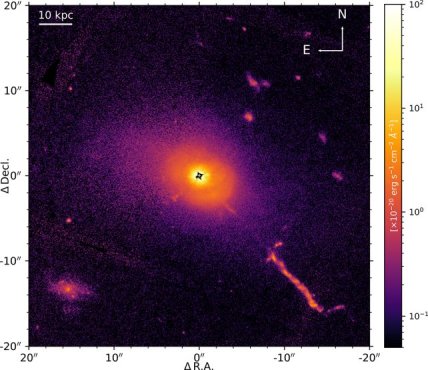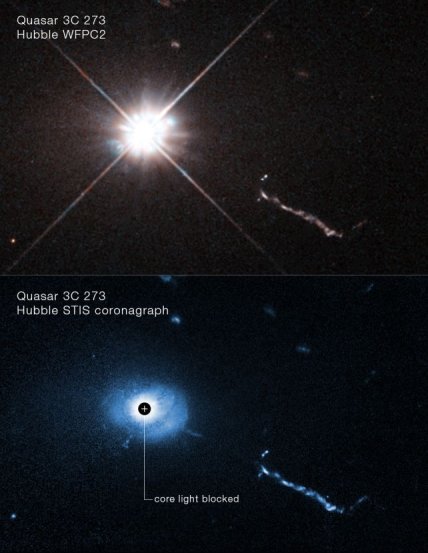One of the universe's brightest objects illuminated a mysterious thread in space, leaving scientists puzzled about its nature.
Among the countless twinkling lights in the starry sky, there is one that stands out distinctly from the rest. The quasar 3C 273 remains the most distant object visible from Earth through a regular telescope. But how does it appear when viewed through an unusual telescope?
To answer this question, astronomers utilized the capabilities of the legendary Hubble Space Telescope. Details of the work were described in the journal Astronomy & Astrophysics.
The quasar 3C 273 is located 2.5 billion light-years away. This means we are currently seeing light that began its journey long before multicellular life emerged on our planet.
The reason we can observe this object from Earth lies in its brightness, which is equivalent to trillions of Suns. Scientists say that even if it were located several tens of thousands of light-years away from us, we would see it in the sky like another Sun.
It was discovered in 1963, and even then, scientists realized they were not looking at an ordinary star, as no star could shine so brightly to be noticeable from Earth at that distance. Now we understand that this object is an active center of a galaxy, rotating around a black hole with a mass of approximately 900 million solar masses.
Gas and dust around the black hole collide with immense gravity and friction as they are pulled inward, generating light across the entire spectrum of radiation before fading away forever.

"For Hubble, looking at quasar 3C 273 is like staring directly into the blinding headlights of a car and trying to see an ant crawling along the rim," the astronomers reported.
However, they managed to use the Space Telescope Imaging Spectrograph (STIS) to slightly dim the main glow, allowing them to examine details near the quasar. This can be compared to holding your hand in front of a flashlight beam when someone shines it in your eyes. This way, you can see the "illuminated" objects without being blinded.

The researchers also discovered objects that had never been seen before—these light blobs could be satellite galaxies or pieces of stellar material that are in the process of being consumed.
They also found an L-shaped light thread that is yet to be identified.
"Our previous understanding was quite limited, but Hubble allows us to gain a detailed understanding of the complex morphology of the quasar and galactic interactions. In the future, further study of 3C 273 in infrared light using the James Webb Space Telescope may provide us with more clues," the scientists said.
As previously reported, scientists uncovered a true giant monster in a distant corner of the universe—a ancient black hole. It emerged just 800 million years after the Big Bang.